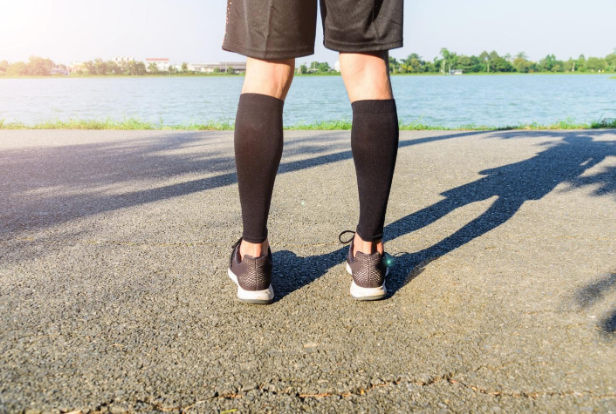Are you prepping for you first marathon? Make sure you have all the tools you need for success. Read on to learn how to prep for running a marathon!
Completing a marathon is a bucket list item for many runners. In fact, 52,812 runners finished the 2018 New York City Marathon. That’s a world record for the most marathon finishers.
Some people run marathons as a personal challenge. Others want to get healthy or raise money for a charity. Whatever your motivation, expect a mental and physical test when running a marathon.
Expert runners and coaches say a marathon takes 12 to 22 weeks of training. But that’s only true for seasoned runners who log 35 or more miles a week.
If you’re new to running long distances, plan on a 6-month training cycle for your first 26.2-mile race. It’s important to increase your mileage at a gradual pace. This improves endurance and prevents injury.
Keep reading to see what you need to know to run and finish your first marathon.
Before You Run
The first step is a realistic look at your current condition. If you’ve never run a mile, consult your doctor before you start.
Recognize that training for a marathon is a huge goal. Most injuries occur when new runners run too many miles too fast. Start small and build on it.
Run in shorter races as part of your training. Run a 5K, 10K, or half marathon to prepare for your first marathon.
Get Proper Equipment
It’s not okay to run in worn-out sneakers. Trained running store staff can fit you for shoes and provide gait analysis. Listen to their feedback to buy the right shoes for your feet.
Invest in sweat-wicking socks. Wet feet get blisters. Coat your feet with vaseline for extra protection.
When cotton and sweat get together they cause painful chafing. Wear sweat-wicking workout clothes instead. You can find performance athletic wear in a variety of colors and styles.
You’ll stick to your training plan if your equipment doesn’t cause problems.
Set a Goal
The goal for first-time marathoners is to finish the race. Running 26.2 miles is a big achievement.
Don’t worry about running fast. You can do that next time.
Pick Your Race
If you’re at the very beginning, choose a race that’s 6 months to a year in the future. That gives you time to build your endurance.
Visit a review site like BibRave.com to find the best races. You’ll find runner reviews of the race.
You can learn about the course, race management, and finisher medals. Reviews also reveal information on spectator support and race swag.
It’s a good idea to run your first marathon close to home. You can train on the actual course. You won’t have to travel. Familiar surrounds may calm you on race day.
Another option is to pick a destination race. A special place and race are good motivators. Plan to arrive a day or two early to recover from any travel.
Marathon experiences range from raucous urban races to quiet miles on country roads. Consider that spectators and crowd support can lift your spirits during a long race.
Choose a Training Plan
Find a running coach, or invest in a professional training plan for novice runners. The training plan goal is to build endurance to the point you can run 26.2 miles.
Every plan should include these 4 components:
- Base Mileage
Each week you increase your mileage by a mile. Run these miles easy enough so you can talk while you run. This is your base mileage.
- Long Runs
Every week to ten days you’ll do a long run. The long run helps your body adjust to running farther. Follow your training plan. Most plans build up to 20 miles.
When you train right, your body and mind are ready to run the extra 6 miles on race day.
- Speed Work
Speed work is running intervals and tempo runs to improve cardio capacity and pace. This different kind of work adds variety to training.
- Rest and Recovery
Don’t run on rest days even when you feel like it. Let your muscles recover.
Recovery includes post-run stretching. Use ice or cold water if you have inflammation. A foam roller is a great way to fix sore muscles.
Get a pair of compression sleeves to wear during and after your long runs. They improve circulation and speed recovery.
Hydration and Fuel
What you eat and drink is plays a vital role in your training and race.
Hydration
Hydrating during a marathon is essential. Plan on fluids every couple of miles.
There will be hydration stations on the marathon course. But, you may want water more often.
Consider carrying your own water in a handheld bottle, hydration pack or belt. If you carry your own water, practice during your training runs.
While training, plan long runs so you pass water fountains. Stash water bottles along your route or in your car. Carry money and stop at stores for beverages.
Make sure you’re always hydrated.
Fuel
Running makes you hungry. What you eat affects how well you recover from intense training.
Always eat carbohydrates and protein within 30 minutes of training hard. It’s the best time frame to replenish your body.
Eat lots of complex carbohydrates when training. Aim for a balanced diet of fruits, vegetables, protein, and whole grains.
Train with any gels or race fuel you plan to use on race day.
On race morning, eat your usual foods a couple of hours before the race. Remind yourself to take your fuel during the race.
Race Day Advice
Study the course before the event. Knowing what to expect helps on race day.
If you’re running with a friend decide if you will or won’t run together.
Get to the starting line an hour early. That gives you time to use the port-a-potty and find your corral.
If it’s cold, wear a throw-away item to stay warm. Good options are a garbage bag or thrift store long sleeve shirt. Toss the items at an aid station once you’re warmed up.
Remind yourself to start slow. If your adrenaline takes over you’ll run too fast. Pace yourself so you don’t run out of energy late in the race.
Walk through aid stations while drinking water or taking fuel. It’s easier and more efficient than doing it on the run.
If family and friends plan to spectate, make a plan so you know when to look for them. Seeing a loved one along the course is a big energy boost.
Enjoy the scenery and spectators. Run your own race and enjoy it.
You’re Prepped for Running a Marathon
You followed your training plan and ran all the miles. You ate well and paid close attention to rest and recovery. You’re trained, hydrated, and fueled.
Congrats, you’re running a marathon! Trust your training and enjoy yourself.
After the race hydrate again, then eat and rest. Take a week off before running again. But go ahead and plan your next sporting adventure!










